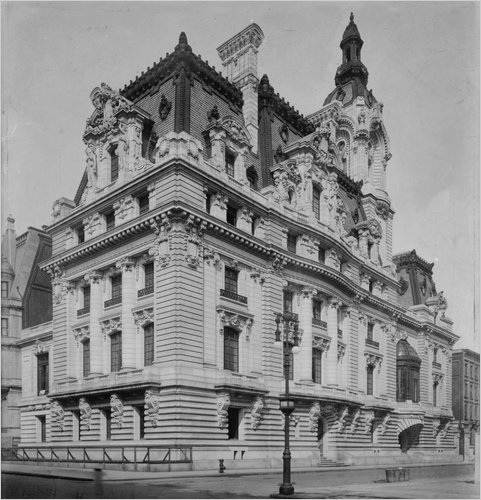Huguette Clark
This obituary for Huguette Clark, who recently died at the age of 104, may be one of the oddest I’ve ever read.
For the quarter-century that followed, Mrs. Clark lived in the apartment in near solitude, amid a profusion of dollhouses and their occupants. She ate austere lunches of crackers and sardines and watched television, most avidly “The Flintstones.” A housekeeper kept the dolls’ dresses impeccably ironed.
Odd, right? Take into further account that she had multiple estates around the country and lived most of her life on Fifth Avenue in New York.
Oh, and she was worth over 400 million dollars.
Her father was William A. Clark, a copper baron born in the 1800s. He built an absolutely astounding 121 bedroom mansion on Fifth Avenue. Here’s a picture, courtesy of the New York Times:

It was, in a stupendous act of stupidity and greed, knocked down in 1926 when restrictions on building height were lifted. Carter B. Horsley:
“No loss was viewed in retrospect to have been greater than that of Senator William Clark’s 121-room pile at Seventy-seventh Street, which was felled by the wrecker’s ball in 1926,” wrote Robert A. M. Stern, Gregory Gilmartin and Thomas Mellins in their book, “New York 1930, Architecture and Urbanism Between the Two World Wars,” (Rizzoli, 1988).
“Yet at the time only The New York Times appeared moved: ‘As for the Clark palace, it has been condemned unreasonably, indiscriminately. An echo of the architectural orgy of the Paris Exposition of 1900, its only fault is that it stops short of perfection in its kind. The inlaid gold leaf that decks its interior woodwork should have been spread upon its fantastic stonework without. Its astronomical tower should have been surmounted by an orrery with a sun of flame and planets of solid gold. It might thus have truly exemplified the senatorial mood of the eighteen-nineties, illumined by the ambitions of a doge.’
That was this woman’s home, for a time. With her, the last living memory of that house, that era, is gone. How small our scratches and turrets on the earth seem after time’s erosion.
Comments
Nils +1
Wow, what a house! Not unlike those along Summit Avenue between the Cathedral and Dale - from the same period anyways. It’s a shame it had to come down. To fall out of favor with the tastes of the era is to risk existence itself it seems.
Alexander Micek
You’re right; there seems to be a time in a building’s history when it isn’t new… but when it also isn’t old yet, and people just look at it as outdated rather than possibly having some historical value. That’s a dangerous time. A close-to-home example is the Metropolitan Building, featured in the series Lost Twin Cities. The demolition of that one still gets me: